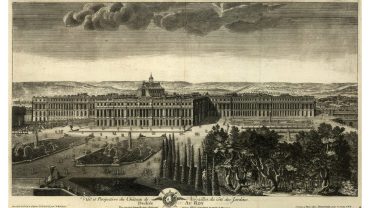Alexander the Great, a name that resonates through history, died in 323 BCE in ancient Babylon. However, in one of history’s most perplexing mysteries, despite his fame and almost universal renown, his final resting place has been lost to the ages. It’s believed he was originally buried in the ancient Egyptian city of Memphis, and subsequently moved to the city that bears his name, Alexandria, in Egypt. But from there, the trail goes cold.
Over the centuries, the tomb’s precise location has been lost, leading to numerous theories and endless speculation. Indeed, for centuries Alexander the Great’s burial site has both baffled and captivated archaeologists, historians and researchers in equal measure, and the exact location of Alexander the Great’s grave remains one of history’s enduring enigmas.
Some suggest it could be somewhere within the bounds of modern Alexandria, while others hypothesise that it may lie undiscovered, waiting to reveal its secrets to the world.
Are there any clues as to where Alexander is buried? Did his tomb fall into the sea becoming lost forever? Can the tomb of Alexander have possibly survived almost 2,500 years?
There are countless questions about the lost tomb of Alexander the Great. Let’s take a trip back in time in an effort to shed light on this enigmatic mystery.
Who was Alexander the Great?

A statue of Alexander The Great. (Credit: Image Source via Getty Images)
Alexander III, born in 356 BCE in Pella, the capital of the ancient Greek kingdom of Macedon, was a towering figure in ancient history.
The son of King Philip II of Macedon, he ascended to the throne at the age of twenty. Alexander embarked on an ambitious campaign of conquest, stretching the Macedonian Empire to unprecedented bounds.
Alexander’s extraordinary feats, highlighted by the subjugation of the vast Persian Empire and the broadening of his dominion, resonate through history. His realm’s reach, spanning from the Hellenic lands to the Nile’s banks and penetrating the heart of Asia, touched even the remote corners of northwestern India. Such a vast expanse ushered in profound shifts in the global tapestry of culture and politics. Astonishingly, Alexander’s legacy of conquest and influence was cemented by the age of only 32, a narrative cut short by his early demise in 323 BCE.
Known for his visionary leadership, Alexander’s legacy endures as a symbol of conquest and cultural fusion, marking him as one of history’s most legendary and influential figures. His strategies and tactics are still studied in military schools worldwide to this day.
It’s no stretch to state that Alexander was therefore a towering figure, whose life, fame and military career were known across the ancient world. So what happened to leave the final resting place of such a revered leader lost to the ages, and why has the mystery of the tomb of Alexander proven such a hard nut to crack?
The Death and First Internment of Alexander

An old engraved illustration of the grave of Alexander the Great. (Credit: mikroman6 via Getty Images)
Alexander’s death, itself shrouded in mystery and controversy, has been a subject of debate among historians and scholars for centuries. Some suggest he succumbed to malaria or typhoid fever, while others speculate about possible poisoning. Alexander’s demise marked the end of an era and the beginning of a tumultuous period of power struggles among his generals, known as the Diadochi. But what of the Alexander the Great burial site itself? While his generals were vying for control, what happened to his body?
Historical accounts from a first century Roman historian named Quintus Curtius Rufus and a Latin writer known simply as Justin, suggested he had expressed a wish to be interred at the Temple of Zeus Ammon at the Siwa Oasis, close to Egypt’s modern-day border with Libya. A wish that was not honoured.
Instead, his body became a pawn in the hands of his successors, setting off a chain of events that would add to the mystery surrounding his final resting place, culminating in what we now know as the lost tomb of Alexander the Great.
Indeed, the journey to understand what happened to Alexander the Great’s grave is as intriguing as his life. Following his death, a magnificent funerary cart – an elaborate construction befitting a ruler of his stature – was commissioned to transport his body. However, this cart never reached Siwa Oasis. In a dramatic turn of events, one of Alexander’s generals, Ptolemy I Soter, hijacked the procession, redirecting it to Memphis in ancient Egypt. This bold move was not just about honouring a fallen leader, but perhaps a strategic play for power and legitimacy in the eyes of Alexander’s empire. However, as with many ancient historical events, the exact details and motivations behind these actions are subject to interpretation and debate.
It’s believed Alexander was initially buried by Ptolemy in Memphis, an ancient capital of Egypt which held significant cultural and religious importance for Alexander.
Alexander in Alexandria

Engraving of the funeral procession of Alexander the Great (Credit: Stock Montage / Contributor via Getty Images)
There are no exact records, but according to a Greek geographer named Pausanias and inscriptions on the Parian Chronicle, the tomb of Alexander was probably moved from Memphis to Alexandria sometime in the late fourth or early third century BC.
Alexandria seemed a more appropriate location for Alexander the Great’s burial site, as it was a symbol of his achievements and the centre of the Hellenistic world he created. This city was also the capital of the Ptolemaic Kingdom, founded by Ptolemy I, one of Alexander’s generals and close companions.
The subsequent fate of Alexander the Great’s tomb and his remains, however, is shrouded in mystery. Over the centuries, the exact location of his tomb in Alexandria was lost.
Many theories have been proposed about its location, but none have been conclusively proven. Evidence suggests that for several centuries following his death, Alexander’s tomb was a well-known and distinct location. Reportedly, it drew visits from some of Rome’s most renowned rulers, including Julius Caesar, Augustus Caesar, Pompey, Septimus Serverus, Caligula and Caracalla. Despite its significance during the Roman Empire, the monument’s prominence slowly diminished, eventually disappearing from historical records altogether.
Over the centuries that followed, various reports of Alexander the Great’s grave site were written. In 400 AD, on a visit to Alexandria, John Chrysostom, an archbishop of Constantinople asked to see the tomb of Alexander and was believed to have said ‘his tomb even his own people know not.’ At around the same time, Cyril, the Patriarch of Alexandria, claimed that the tomb of Alexander the Great was ordered opened by Emperor Theodosius I and looted.
Later, in the ninth century, Egyptian writers Ibn ‘Abd al-Hakim and Al-Masudi claimed to have seen Alexander’s tomb, as did fifteenth century Spanish writer Johannes Leo Africanus, known as Leo the African. However there’s no concrete evidence to suggest that what they saw was indeed Alexander the Great’s burial site and not merely a representation of such, or indeed a ruse to attract men of stature to the city. Various historical events, including wars, changes in rulership, and urban development in Alexandria, likely contributed to the loss of its precise location.
To this day, the search for the lost tomb of Alexander the Great has intrigued historians and archaeologists for centuries, and it remains one of the great unsolved mysteries of the ancient world.
Where is the Tomb of Alexander Now?

'Augustus before the Tomb of Alexander the Great', 17C (Credit: Fine Art Images/Heritage Images/Getty Images)
According to the Egyptian Supreme Council for Antiquities, there have been around 150 officially recognised searches for the lost tomb of Alexander the Great, yet none have – so far – proved fruitful. There remain a number of prevailing theories as to its location.
Alexandria
The most widely accepted theory is that Alexander’s tomb is somewhere within the modern city of Alexandria. This city, founded by Alexander himself, was the initial known resting place of his body. Over time, the exact location has been lost, likely due to changes in the city’s landscape, natural disasters like earthquakes, and the rise and fall of different empires. More specifically, some have suggested the tomb of Alexander may be buried either under the El Nabi Daniel Mosque in Alexandria, or in the city’s royal quarter. This area was a complex of palaces and temples, fitting for a royal burial. However, much of this area is now under the modern city, making excavations challenging, if not impossible.
Pharos Island
Another theory speculates that parts of ancient Alexandria, including Alexander’s tomb, might have sunk due to seismic activity and changes in sea level. This theory points to the area near Pharos Island, once home to the Lighthouse of Alexandria, one of the seven wonders of the ancient world.
Taphos
A few scholars have hypothesised that the Alexander the Great grave might be in Taphos, an early name for the necropolis area of Alexandria. This area had numerous tombs and may have been a likely place for a prestigious burial like Alexander’s.
Amphipolis, Greece
A tomb dating to the age of Alexander was discovered in 2014 in Amphipolis and speculation at the time suggested it may have been built for Alexander III of Macedon, but not used due to Ptolemy’s seizure of the funerary procession.
Venice, Italy
One of the more speculative and less widely accepted claims as to the location of the lost tomb of Alexander the Great is that his body was stolen by Venetian merchants who were under the impression the body was in fact that of St Mark the Evangelist. It was said that they smuggled the body out of Alexandria, and that it was reinterred in St Mark’s Basilica in Venice.
Recent Claims
Since 2019, there have been a number of claims as to the final resting place of Alexander the Great. Calliope Limneos-Papakosta, a Greek archaeologist, discovered a marble statue believed to be of Alexander in the Shallalat Gardens, near the old royal quarter of Alexandria. Further, in 2023, she uncovered another statue alongside an ancient Roman road leading to a building’s foundations. These findings hint at the possibility that she might be on the verge of solving one of the greatest archaeological mysteries. However, as of now, there’s no conclusive evidence to directly connect these discoveries with Alexander’s tomb.
These theories, while intriguing, remain largely speculative. The mystery of Alexander’s final resting place continues to be a subject of fascination, and the discovery of his tomb would be a landmark event in archaeology.
In the Footsteps of Greatness: The Quest for the Tomb of Alexander

Alexander the Great’s sarcophagus. (Credit: Tolga TEZCAN via Getty Images)
The enduring quest to locate the lost tomb of Alexander the Great remains one of the great archaeological and historical mysteries of our time. Alexander’s tomb, once a symbol of his unmatched legacy and a site of pilgrimage, has eluded discovery for centuries, buried under ever-deepening layers of history, myth and legend.
The search for his final resting place is not just a pursuit of a grave. It’s a quest to rediscover a tangible piece of the past, a link to a ruler who shaped the course of history.
As archaeologists and historians continue to piece together clues from ancient texts, architectural remnants, and modern technology, the hope persists that one day the tomb of Alexander the Great will be unearthed, offering new insights into the life and death of one of history’s greatest military minds.












